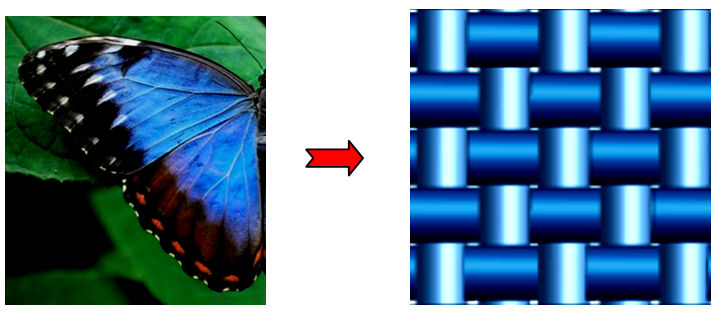“Interactive textile studies and research are not limited to the textile industry only; the textiles can be found in almost any business”, says Professor Dr Donatas Petrulis, researcher at Kaunas University of Technology (KTU), Faculty of Mechanical Engineering and Design. He, together with Dr Salvinija Petrulytė have delivered a series of lectures across various universities in the Baltic’s, Finland and Denmark.
Smart textile products were in the focus of these lectures, and, according to the researchers, today’s textile industry can learn a lot from natural world.
“Animals, plants and insects have evolved over billions of years to develop the highly efficient solutions, such as super-hydrophobic, self-cleaning and repair, energy conservation, drag reduction, dry adhesion, adaptive growth and other qualities. These are the features researchers working on smart textile products take inspiration from”, says Dr Petrulytė.
According to her, lotus effect, pine cone effect, duck feather effect, water striders’ leg effect, butterfly wings effect and many others demonstrate fantastic behaviour of nature, and the possibilities to mimic it render outstanding outcomes in man-made solutions. Textile is a widely accepted object in all human life areas, and the intelligent textile products are not limited to being used in medicine, architecture, construction and defence.
During the lectures KTU researchers invited the audience to contemplate on fairy-tale like smart textile products, such as light emitting dress, textiles that communicate and interact, smart bandages that change colour depending on the type of bacteria and many other concepts.
“Textile builds bridges between various areas of activity. The field of smart textiles is not yet a discrete area. It is more an interdisciplinary subject incorporating various fields of science – biotechnology, computer science, microelectronics, polymer chemistry, material science as well as design and its future lies in the potential of  combining different technologies”, says Petrulytė, who is the head of the project Synergy of Science, Art and Technology for Innovative Materials Dedicated for Knowledge Driven Environment sponsored by NORDPLUS Higher Education’2016 Programme (Nordic Council of Ministers) and carried out by higher schools in Lithuania, Latvia, Estonia, Finland and Denmark.
combining different technologies”, says Petrulytė, who is the head of the project Synergy of Science, Art and Technology for Innovative Materials Dedicated for Knowledge Driven Environment sponsored by NORDPLUS Higher Education’2016 Programme (Nordic Council of Ministers) and carried out by higher schools in Lithuania, Latvia, Estonia, Finland and Denmark.
“The students are enthusiastic, very interested in smart products and want to learn more. The network creates links between the universities in developing and implementation of collaborated projects in studying process, research, and pedagogical field in the context of the modernisation and internationalisation strategies of the institutions”, says Petrulis.
The series of seminars were carried out within the frame of Nordplus Network. The teaching mobility served as a tool to strengthen and develop educational cooperation of a Nordic-Baltic region as well as support, develop, and disseminate innovations in education and research through the exchange of experiences and best practice.
